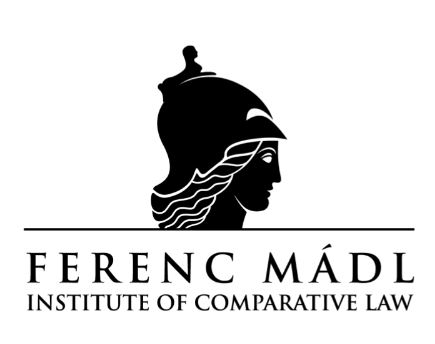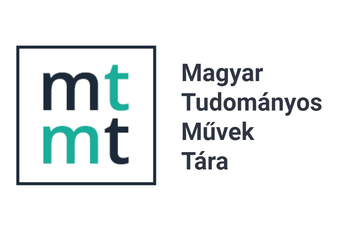Safe in the family
DOI:
https://doi.org/10.46941/2023.e1.14Keywords:
child maltreatment, physical, psychical and sexual abuse, child abuse, domestic violence, child psychology.Abstract
Corporal punishment of children has been a part of everyday life for centuries, as it has long been seen as a means of education. However, in the last century many social scientists, psychologists and doctors warned parents about the dangers of punitive discipline. The concept of child abuse has long been recognised in the paediatric literature, with the term “Battered Child Syndrome” being coined by Henry Kemp.
Many parents see corporal punishment of their children as an effective, socially acceptable method of child-rearing. Parents hit their children not because they want to do so or because they want to hurt them, but rather because they believe that corporal punishment teaches their children positive patterns of behaviour and protects them from various threats. Parents often know of no other way to express their dissatisfaction with their child or their own helplessness. They seldom think about how their child might feel when he or she gets a beating or is waiting for the inevitable slap.
The public opinion is that corporal punishment is a necessary part of discipline and education. It is from spanking and slapping that children learn to respect their parents. To improve the situation of physically abused children, it is necessary to change social attitudes towards such behaviours and to teach parents the negative effects of these behaviours. Another key task is to educate parents about alternative child-rearing methods. Corporal punishment as a means of disciplining children will not immediately disappear from parents' child-rearing repertoires. In fact, as research and expert opinion confirms, constant and consistent educational work will only lead to a gradual change in parents' attitudes and behaviour.
References
Browne, K., Hamilton, C. (1999) ‘Police recognition of the links between spouse abuse and child abuse’, Child Maltreatment, 4(2), pp. 136-147; https://doi.org/10.1177/1077559599004002006.
Fehér, L. (2005) ‘A nők sérelmére elkövetett családon belüli erőszak empirikus vizsgálata’ in Virág, Gy. (ed.) Családi iszonyok. Budapest: Complex, pp. 171-191.
Forward, S. (2000) Mérgező szülők. Budapest: Háttér.
Frivaldszy, J. (2012) ‘Szempontok a családvédelmi törvény értékeléséhez’, Iustum Aequum Salutare, 8(2), pp. 57-69.
Greene, C., Haisley, L., Wallace, C., Ford, J. (2020) ‘Intergenerational effects of childhood maltreatment: A systematic review of the parenting practices of adult survivors of childhood abuse, neglect and violence’, Clinical Psychology Review, 80(2020); https://doi.org/10.1016/j.cpr.2020.101891.
Gyurkó, Sz. (2022) A gyermekbántalmazási statisztika növekvő tendenciát mutat Magyarországon [Online]. Available at: https://novekedes.hu/interju/gyurko-szilvia-a-gyermekbantalmazasi-statisztika-novekvo-tendenciat-mutat-magyarorszagon (Accessed: 17 January 2023).
Hegedűs, J., Pintyi, Z. (2012) A gyermekbántalmazásról röviden pedagógusoknak [Online]. Available at: https://docplayer.hu/670711-Segedanyag-a-gyermekbantalmazas-temajahoz-pedagogusok-szamara.html (Accessed: 21 January 2023).
Herczog, M., Kovács, Zs. (2004) 1. sz. Módszertani levél háziorvosok, házi-gyermekorvosok, védőnők, gyermekegészségügyi szakemberek részére. A gyermekbántalmazás és elhanyagolás megelőzése, felismerése és kezelése [Online]. Available at: http://szociologiaszak.uni-miskolc.hu/segedanyagok/gyermekbantalm.pdf (Accessed: 4 February 2023).
Hoefnagels, C., Evers, S., Snoeren, F., Meesters, C., Lamers-Winkelman, F. (2020) ‘Self-reported quality of life of maltreated children who have been reported to advice and reporting centers on child abuse and neglect’, Journal of Child and Family Studies, 29, pp. 471–481; https://doi.org/10.1007/s10826-019-01604-4.
Kerezsi, K. (1995) A védtelen gyermek, Budapest: KJK.
Mérai, M. (2006) Bűbájos nagyszülők-a bántalmazás többgenerációs átörökítése, Budapest: Jószöveg Műhely.
Ogle, C., Miller, T., Fisher, J., Zhou, J., Cozza, S. (2022), ‘Latent classes of child neglect types and associated characteristics’, Child Abuse and Neglect, 134(2022), pp. 1-10; https://doi.org/10.1016/j.chiabu.2022.105909.
Pászthy, B. (2007) ‘A gyermekbántalmazás és elhanyagolás jelenségköre a gyermekorvos szemszögéből’, Családi Jog, 5(4), pp. 15-21.
Popper, P., Ranschburg, J., Vekerdy, T. (2005) Sorsdöntő találkozások: szülők és gyermekek. Budapest: Saxum.
Ranschburg, J. (2003) Az én és a másik, Budapest: Okker.
Ranschburg, J. (2006) A meghitt erőszak, Budapest: Saxum.
Révész, Gy. (1999) ‘A felnőttvilág gyerekekkel kapcsolatos elvárásai és a gyermekbántalmazás’, Magyar Pszichológiai Szemle, 54(3), pp. 85-103.
Strathearn, L., Giannotti, M., Mills, R., Kisely, S., Najman, J., Abajobir, A. (2020), ‘Long term cognitive, psychological, and health outcomes associated with child abuse and neglect’, Pediatrics, 146(4), pp. 389-403; https://doi.org/10.1542/peds.2020-0438.
Szöllősi, G. (2005), ’A családon belüli erőszak differenciáltsága - – Különbségek a nevek, a
felfogások és a helyzetek szintjén.’ in Virág, Gy. (ed.) Családi iszonyok. Budapest: Complex, pp. 65-87.
Tamási, E. (2005) Bűnös áldozatok. Budapest: BM.
UNICEF, (2014). Hidden in plain sight: A statistical Analysis of violence against children [Online]. Available at: https://data.unicef.org/resources/hidden-in-plain-sight-a-statistical-analysis-of-violence-against-children/ (Accessed: 29 January 2023).
UNICEF, (2023). Piszkálnak a suliban? Zaklatnak a neten? Kiközösítenek az edzésen? [Online]. Available at: https://unicef.hu/ezt-tesszuk-itthon/segitunk/helpapp (Accessed: 29 January 2023).
Wilson, R. F., Afifi, T. O., Yuan, K., Lyons, B. H., Fortson, B. L., Oliver, C., Watson, A., Self-Brown, S. (2023) ‘Child abused related homicides precipitated by caregiver use of harsh physical punishment’, Child Abuse and Neglect, 135(2023), pp. 3-7; https://doi.org/10.1016/j.chiabu.2022.105953.
WHO (2022) Child Maltreatment [Online]. Available at: https://www.who.int/news-room/fact-sheets/detail/child-maltreatment (Accessed: 29 January 2023).
Wong, J.Y.-H.; Wai, A. K.-C.; Wang, M. P.; Lee, J. J.; Li, M.; Kwok, J. Y.-Y.; Wong, C. K.-H.; Choi, A. W.-M. (2021), ‘Impact of COVID-19 on child maltreatment: Income instability and parenting issues’, International Journal of Environmental Research and Public Health, 18(4), p. 1501; https://doi.org/10.3390/ijerph18041501.





